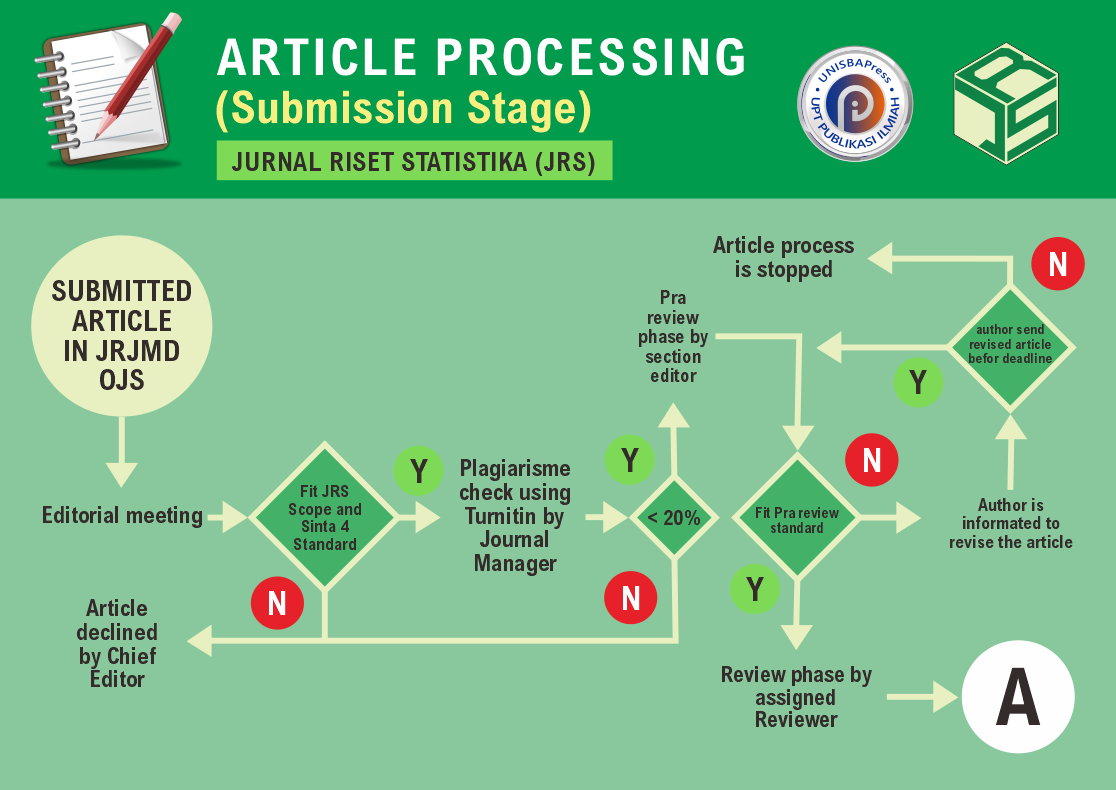Rekomendasi Destinasi Wisata di Indonesia Menggunakan Metode Item2Vec
DOI:
https://doi.org/10.29313/jrs.v3i1.1770Keywords:
Collaborative Filtering, Item2Vec, Tourist DestinationAbstract
Abstract. Everyone choosing an item can be different, thus recommendations will be difficult to be given when many peoples have their own preferences. Hence, we need a method that can provide recommendations to many peoples, one of them is Item2Vec. Item2Vec is an item recommendation method that only uses user rating data in its algorithm. The items recommended to users are items that are similar to items previously liked. In its algorithm, Item2Vec is built with collaborative filtering (CF) and Word2Vec Skip Gram with Negative Sampling (SGNS). Through Word2Vec SGNS, it represents items into a vector of numbers through a neural network process, that is feedforward, that minimizing the objective function and backpropagation. Through CF, the vector for each item will be calculated using cosine similarity as the similarity value between items. The highest cosine similarity value results are interpreted as the most recommended items for each item and otherwise. Item2Vec has greater accuracy and more effective performance than recommendation systems built by Singular Value Decomposition (SVD) with CF. The objective of this research is to provide recommendation for tourist destination in Indonesia, by using Item2Vec method. This method makes it easier for tourists to choose tourist destinations and also makes it easier for travel agents to offer tourist destinations for promotion purposes. The Item2Vec method produces recommendations for tourist destinations in Indonesia with an accuracy of 61% and is considered to be performing quite well.
Abstrak. Keinginan setiap orang dalam memilih suatu item dapat berbeda-beda, sehingga rekomendasi akan sulit diberikan ketika banyak orang memiliki keinginannya masing-masing. Maka, diperlukannya metode yang dapat memberikan rekomendasi kepada banyak orang salah satunya yaitu Item2Vec. Item2Vec merupakan sistem rekomendasi item yang hanya menggunakan data rating pengguna dalam algoritmanya. Item yang direkomendasikan kepada pengguna yaitu item yang memiliki kemiripan dengan item yang disukai sebelumnya. Dalam algoritmanya, Item2Vec dibangun dengan collaborative filtering (CF) dan Word2Vec Skip Gram with Negative Sampling (SGNS). Melalui Word2Vec SGNS, direpresentasikannya item ke dalam vektor angka melalui proses neural network yaitu feedforward, meminimumkan fungsi objektif dan backpropagation. Melalui CF, vektor setiap item dihitung menggunakan cosine similarity sebagai nilai kemiripan antar item. Hasil nilai cosine similarity tertinggi diartikan sebagai item yang paling direkomendasikan untuk setiap item dan juga sebaliknya. Item2Vec memiliki akurasi lebih besar dan kinerja lebih efektif dibandingkan sistem rekomendasi yang dibangun oleh Singular Value Decompotion (SVD) dengan CF. Tujuan dari penelitian ini adalah memberikan rekomendasi destinasi wisata di Indonesia, dengan menggunakan metode Item2Vec. Metode ini mempermudah wisatawan dalam memilih destinasi wisata dan juga mempermudah biro perjalanan dalam menawarkan destinasi wisata untuk keperluan promosi. Metode Item2Vec menghasilkan rekomendasi destinasi wisata di Indonesia dengan akurasi sebesar 61% dan termasuk ke dalam performa cukup baik.
References
A. Firdaus, “Aplikasi Algoritma K-Nearest Neighbor pada Analisis Sentimen Omicron Covid-19,” Jurnal Riset Statistika, pp. 85–92, Dec. 2022, doi: 10.29313/jrs.v2i2.1148.
A. Susanto, “Implementasi Sistem Rekomendasi Menggunakan Pendekatan Collaborative Filtering dan Algoritma Slope One Pada SIstem Informasi Penjualan,” Universitas Teknologi Yogyakarta, 2020.
O. Barkan and N. Koenigstein, “Item2Vec: Neural Item Embedding for Collaborative Filtering,” Vietri Sul Mare: IEEE, pp. 1–6, 2016, doi: 10.1109/MLSP.2016.7738886.
A. A. Faqir, “Sandiaga Uno: Industri Pariwisata Alami Kontraksi Hebat, Kunjungan Turun 80 Persen,” merdeka, Sep. 27, 2021.
B. Nugraha, “Sandiaga Uno: Perlu Gerak Cepat Pulihkan Pariwisata Indonesia ,” Viva, Nov. 26, 2021. https://www.viva.co.id/berita/nasional/1426670-sandiaga-uno-perlu-gerak-cepat-pulihkan-pariwisata-indonesia
N. Yuniar, “Paket menarik ditawarkan demi tingkatkan pariwisata domestik,” Antaranews, Jan. 05, 2022. https://www.antaranews.com/berita/2624693/paket-menarik-ditawarkan-demi-tingkatkan-pariwisata-domestik
X. Rong, “word2vec Parameter Learning Explained,” Nov. 2014.
M. N. Zain, “Algoritma Artificial Neural Network dalam Klasifikasi Chest X-Rays Pasien COVID-19,” Jurnal Riset Statistika, pp. 137–144, Dec. 2022, doi: 10.29313/jrs.v2i2.1426.
P. D. Inas Azizah, “Penerapan Probabilistic Neural Network pada Klasifikasi Berat Bayi Baru Lahir,” Jurnal Riset Statistika, vol. 1, no. 2, pp. 152–159, Feb. 2022, doi: 10.29313/jrs.v1i2.524.
V. Kuzmin, “Item2Vec-based Approach to a Recommender System,” University of Tartu, 2017.
A. Mnih and Y. W. Teh, “A fast and simple algorithm for training neural probabilistic language models,” . International Journal of Multimedia and Ubiquitous Engineering, vol. 9, no. 8, pp. 1751–1758, 2012.
A. Irianti, P. H. Rantelinggi, A. Taufik, N. Zulkarnaim, and S. Cokrowibowo, “Implementation of Backpropagation Artificial Neural Network For Food Price Prediction in Majene Central Market,” Jurnal Teknik Informatika (JUTIF), vol. 3, no. 3, pp. 681–688, 2022, doi: 10.20884/1.jutif.2022.3.3.226.
J. Lalis, B. Gerardo, and Y. Byun, “An adaptive stopping criterion for backpropagation learning in feedforward neural network,” International Journal of Multimedia and Ubiquitous Engineering, pp. 149–156, 2014, doi: 10.14257/ijmue.2014.9.8.13.
N. Nisa, A. Trihasto, and D. Pravitasari, “Optimasi Daya Keluaran Permanent Magnet Shyncronous Generator pada Pembangkit Listrik Tenaga Bayu,” Journal of Electrical Engineering, Computer, and Information Technology, vol. 02, no. 01, 2021.
B. A. Yilma, “Recommendation based on sequence (ɪᴛᴇᴍ2ᴠᴇᴄ),” Trento: Università degli Studi di Trento, 2016.
S. Allwright, “What is a good accuracy score in machine learning?,” stephenallwright.com, May 14, 2022.













